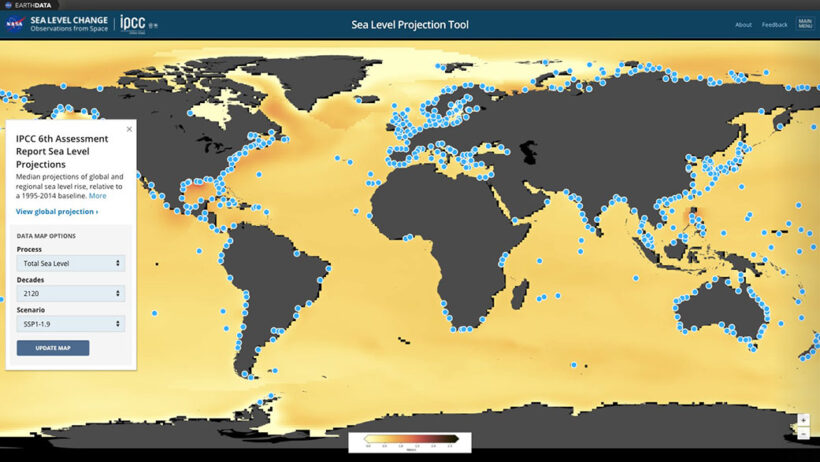As climate change accelerates, the world’s oceans are steadily rising, leaving coastal cities teetering on the brink of calamity. But how does this phenomenon manifest in tangible terms for urban dwellers? What cities are particularly vulnerable to the relentless encroachment of the seas? In this exploration, we’ll traverse through some of the most at-risk coastal areas, unveiling not just the environmental implications but also the socio-economic ramifications of this daunting reality.
Understanding the magnitude of sea-level rise is crucial. It isn’t merely a looming threat; it has already begun affecting millions of people worldwide. Cities that sit on the water’s edge, often celebrated for their scenic vistas and vibrant culture, now face dilemmas that could relegate them to history. Why? Because the sea is relentless, and its rise is exacerbated by the melting of polar ice caps and the thermal expansion of seawater.
Before diving deeper, consider this playful question: if you could only save one iconic coastal city from the impending doom of rising tides, which would it be? The truth is that many of these cities harbor cultural treasures and economic engines that, if lost, would represent a collective loss for humanity.
Now, let’s delve into the heart of the matter: the cities that are facing an existential threat due to rising sea levels.
Coastal Cities on High Alert
Coastal cities around the globe are experiencing the harrowing consequences of rising sea levels. Some of the most pronounced effects can be observed in the following locations:
Miami: The Gateway to Paradise
Miami, a bustling metropolis known for its cultural diversity and beautiful beaches, stands as a prime example of vulnerability. Experts predict that by 2060, significant portions of this city could be inundated if no preventive measures are put in place. Rising seas threaten not only homes and public infrastructure but also the delicate ecosystem of the Everglades, a vital natural sanctuary.
New Orleans: The Crescent City’s Dilemma
New Orleans, famed for its rich history and vibrant music scene, has already faced the catastrophic consequences of natural disasters. With sea levels rising and the city’s land gradually subsiding, residents grapple with a stark reality. The intricate system of levees and barriers that was established post-Hurricane Katrina is continually challenged, highlighting the urgent need for adaptive strategies.
Bangkok: A Sinking Metropolis
Bangkok, a city known for its bustling markets and ornate temples, is confronting an unprecedented crisis. Situated on a delta with a network of rivers, the city is sinking at an alarming rate of approximately one to two centimeters per year due to excessive groundwater extraction. Coupled with rising sea levels, the prognosis appears grim, making effective urban planning paramount.
The Great Disappearing Act: Pacific Island Nations
Far beyond urban centers, entire nations are at risk. The Pacific Islands, particularly the Maldives, Kiribati, and Tuvalu, face the possibility of becoming uninhabitable. Rising seas threaten freshwater resources, agricultural land, and the very existence of these island nations. The residents find themselves metaphorically standing on the precipice of oblivion, and the rest of the world must take heed.
Economic Implications of Sea-Level Rise
The ramifications of rising sea levels extend past environmental concerns; they infiltrate economic structures as well. Coastal cities serve as economic hubs for tourism, trade, and commerce. An influx of water could undermine industries, leading to job losses and economic instability.
For instance, areas in Florida that rely on tourism may experience a decline as beaches diminish and natural attractions face erosion. Likewise, New York City, the financial capital of the world, confronts enormous costs in reinforcing its infrastructure against potential flooding. The economic burden of climate adaptation must be shouldered not only by affected cities but also by surrounding regions and nations.
Innovating for Resilience: Adapting to Rising Tides
Cities are not merely passive victims of geological destiny; many are adopting innovative strategies to combat the challenges posed by rising sea levels. From creating elevated structures to reinforced seawalls, urban planners are being pushed to become creative thinkers who balance aesthetics, functionality, and resilience.
Additionally, initiatives such as “sponge cities” are emerging. These urban landscapes incorporate green spaces that absorb excess rainwater, diminishing flooding risk. Integrating nature with infrastructure presents an exciting opportunity for cities to safeguard their futures while enhancing residents’ quality of life.
The Role of Community Engagement
Neighborhoods must also engage in discussions about climate change impacts. Local communities play a pivotal role in influence and action. Awareness campaigns and educational programs can empower residents to adopt sustainable practices and advocate for initiatives that protect their homes. After all, grassroots movements often drive meaningful change.
So, what can you do? Start conversations in your community, become informed, and advocate for policies that champion climate resilience. Every voice matters in this climactic battle against the tide.
In conclusion, as sea levels continue to rise, the implications for coastal urban centers are profound. The need for comprehensive, adaptive strategies has never been more pressing. While the future appears uncertain, a proactive approach involving local communities, governmental policy, and innovative solutions can turn the tide—or at the very least, delay it. How will we rise to the challenge of living on a planet where the seas threaten our existence? The answer lies in collaboration, creativity, and an unwavering commitment to protecting our shared future.






